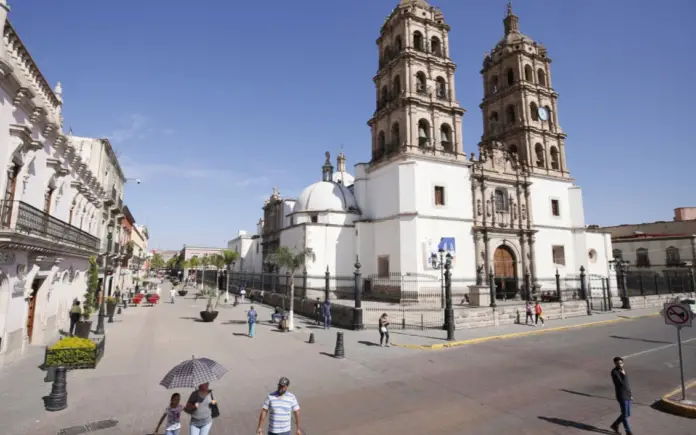In the third quarter of last year, Durango registered the country’s highest annual growth in economic activity, with a rate of 6.0%, according to the Quarterly Indicator of State Economic Activity (ITAEE) of the National Institute of Statistics and Geography (Inegi).
During the first months of 2024, the state consolidated its economic development with the arrival of global companies such as Solarever, which invested 3.4 billion pesos for a new solar panel factory, as well as Solarever Electric Vehicles (SEV), which invested 6.8 billion pesos for an electric car assembly plant, generating jobs.
Additionally, “film projects were carried out with platforms such as Amazon Prime and Netflix, strengthening the local film industry,” said analyst Héctor Magaña.
Meanwhile, Oaxaca ranked second with an accumulated increase of 5.5% in its economic activity.
The completion of the Barranca Larga-Ventanilla highways, which allow a three-hour trip from Oaxaca de Juárez to Puerto Escondido; and the Mitla-Tehuantepec highway, which, after 18 years of construction, allows a three-hour trip to Huatulco from the state capital, shared José María Villalobos, former president of the College of Economists of Oaxaca.
“The operation of these toll roads has brought tangible benefits in employment and income for the service sector, these tourist destinations have shown a notable growth in visitors and long-stay residents, while ecotourism on farms facing Huatulco has gained ground,” he added.
Isthmus of Tehuantepec
In the Isthmus of Tehuantepec, federal investment in the port of Salina Cruz, together with the advances in the construction and operation of the Interoceanic Train, “helped the Oaxacan economy grow and improve connectivity for cargo and passengers by rail, boosting the secondary sector.”
José María Villalobos explained that the flow of remittances also helped, which continues to be decisive for the Oaxacan economy, “migrants inside and outside Oaxaca sustain the demand for private health services, construction materials and food in the seven regions of the state.”
“In the United States, particularly in Oregon, North Carolina, California and Texas, Oaxacan labor is highly valued, while in Canada there is a tradition of field workers who go in an orderly manner to work there; remittance shipments to Oaxaca exceed 4% of the state’s GDP,” he said.
In addition, the state highlights the progress in the consolidation of certified forestry companies in the mountains, dedicated to the responsible management of forests, as well as the competitiveness of local producers of fruit trees such as grapefruit, pineapple, maradol papaya and mango.
On the coast, dairy and beef cattle continue to grow, competitively supplying the local market; coffee growing recovered from the rust plague, triggering the primary sector.
“With these local, federal and remittance boosts, the state grew at a rate higher than the national average.”
Lack of diversification
At the other extreme, five states presented annual contractions in their ITAEE in the accumulated to the third quarter of last year.
The most pronounced falls were observed in Tabasco (6.7% annually) and Campeche (4.5%), which are facing the end of federal infrastructure works and a lack of diversification.
They were followed by Sinaloa with 0.2%, Coahuila with 0.4% and Nayarit with 0.7%. In the first case, it was a reflection of the impact of the increase in violence in September 2024.
“Coparmex points out that at least 108 companies closed in recent months, with losses exceeding 18,000 million pesos and the elimination of 25,000 jobs,” said Héctor Magaña.
For specialist Kristobal Meléndez, Sinaloa does not attract enough to generate relevant projects that boost its economy; Coahuila has not diversified its sectors like other northern states; “while Nayarit has years of investment lag, making it difficult to compete in sectors other than tourism.”

Source: eleconomista




